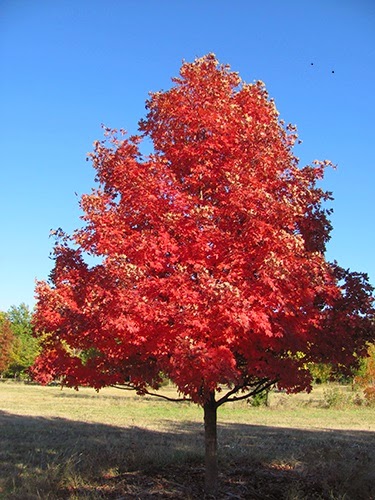Fall Garden Clean-Up
Cassie Homan, Horticulture Agent
On October 14
most of the Post Rock area got their first taste of winter with a blanket of
snow. The snow and the cooler temperatures mean that our gardening season is
coming to an end. It is important to get rid of leftover plant debris in annual
flower beds and vegetable gardens to reduce the risk of disease and have a
successful garden next spring. Here are some garden clean-up tips.
Vegetable Garden Clean-Up
To insure a
pest and disease free spring garden, remove all plant material, with the
exception of winter vegetables or cover crops. Fall leaves, tree and shrub
trimmings and dead garden material make a great addition to your compost pile.
Another option is to chop up the plant debris and till it into the soil. The
tilling process will work the pieces into the soil and allow for the debris to
decompose more rapidly than if left on the soil surface.
Perennial Garden Clean-Up
Unlike annual
and vegetable gardens, completely clearing your perennial garden of plant
debris may not be necessary. Fall garden clean up helps reduce overwintering
pests and disease, but for perennials that haven’t experienced these issues,
leaving stems and stalks can add winter interest to your landscape. Ornamental
grasses, even turned brown, are better than stumps of straw. They create a
pleasant rustle in the winter wind and look lovely covered in snow!
Leaving
foliage can help some perennials overwinter by protecting crowns (ferns are one
example) and seed heads can feed your back yard birds. Not all foliage should
be left however. For herbaceous perennials (a plant whose growth dies down
annually but whose roots or other underground parts survive) follow the rule of
the 3 C’s. Cut, Clean, and Cover. Cut any dead or diseased materials. Clean the
bed of leaves, weeds, and debris. Then cover the area with mulch to protect the
plants from the unpredictable Kansas winter.
Prepare for Spring
 Fall is a
great time to reflect on your gardening season. It’s always a good practice to
keep a journal to map out your garden and note what did well and what wasn’t as
successful. Fall is also an ideal time to work your soil. Roughly tilling soil
can give you a head start in the spring. If you had some crops that didn’t produce
as well as you hoped, you might want to conduct a soil test. This is a great
way to see what amendments need to be added to your soil for next season. To
take a soil test collect 4 to 5 cores or slices. Collect a vertical sample
starting at the surface of the soil and dig 6 inches deep for gardens and 3
inches for lawns. Mix all the samples thoroughly in a clean bucket. Bring two
cups of the mixed soil to your local Extension Office in a re-sealable plastic
bag. Fall is a great time to do a soil test because your amendments, like
nutrients and organic matter, have time to break down and become incorporated
into your soil before you start planting.
Fall is a
great time to reflect on your gardening season. It’s always a good practice to
keep a journal to map out your garden and note what did well and what wasn’t as
successful. Fall is also an ideal time to work your soil. Roughly tilling soil
can give you a head start in the spring. If you had some crops that didn’t produce
as well as you hoped, you might want to conduct a soil test. This is a great
way to see what amendments need to be added to your soil for next season. To
take a soil test collect 4 to 5 cores or slices. Collect a vertical sample
starting at the surface of the soil and dig 6 inches deep for gardens and 3
inches for lawns. Mix all the samples thoroughly in a clean bucket. Bring two
cups of the mixed soil to your local Extension Office in a re-sealable plastic
bag. Fall is a great time to do a soil test because your amendments, like
nutrients and organic matter, have time to break down and become incorporated
into your soil before you start planting.
Cleaning up
the garden might feel like a chore, but planning for next spring can be fun on
a cold winter day. Stop by the Extension Office for more tips on composting,
cleaning your garden, and overwintering plants!









